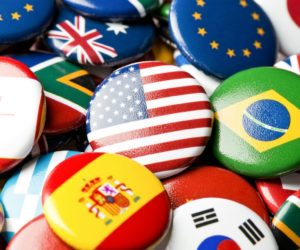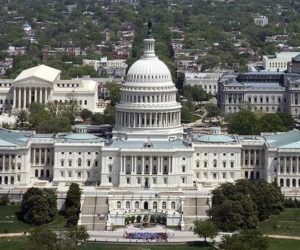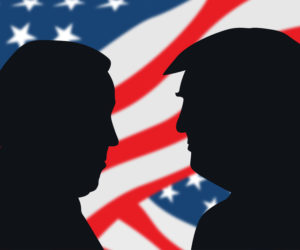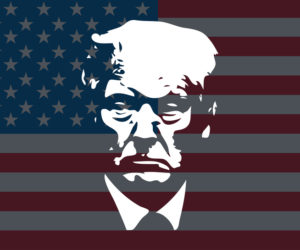New Delhi: India has lived through several major terror strikes during the past two decades in different parts of the country, including a major attack on Indian Parliament to kill important leaders. Ordinary people continue to suffer pain and anguish non-stop on this account. (Photo above courtesy Associated Press: Foreign tourist saved from an attacked Mumbai hotel.)
(Meanwhile Army commandos moved into the luxury Oberoi and the Taj Mahal hotels to flush out terrorists holed up there. A militant holed up inside Oberoi Hotel told a news channel on Thursday that seven attackers were holding hostages. ‘There are seven of us inside hotel Oberoi,’ he said. To see Mumbai video coverage pl visit http://broadband.indiatimes.com/toishowvideo/3762676.cms)
India has faced many such challenges bravely, and there have been several “9/11s” before. Now the country has also learned a cardinal lesson that these terrorists are the creation, direct or indirect, of bigger international forces/players. And only the big players can really stop the carnage.
Since terror attacks are not showing any signs of abating despite eight years of international “war on terror”… India has decided that it should pay more attention to self-preparedness and the relief and healing measures. The favourite word “revenge” has been taken out of the dictionary.
For the USA and the West some understanding of “terrorism” and “militancy” began only after the 9/11 terrorist attacks in New York. That was the first time when Americans suffered pain and devastation, as a consequence of terrorism, at a personal level.
Before that the repeated reminders from India during the 1980s and the 1990s (when Sikh and Kashmiri terrorists were killing innocent people) about rising terrorism fell on deaf ears and the leaders and the media in the West trivialized the whole issue. At that time there was a strong conviction in the USA that terrorism could happen only ‘elsewhere in the world’.
There is a growing belief that during the past eight years the myopic/dangerous and extremely self-centered policies of the Western leaders have complicated the issue no end.
Imagine the time when the Indian parliament was nearly crippled by armed terrorists a few years ago, but it merited scant attention of the Western leaders/media.
Instead of sitting down and seriously discussing the issue of militancy and terrorism with world leaders, even the American president-elect Barack Obama is merely talking of sending more and more troops to Afghanistan. The question being asked now is: How is he different from President George Bush?
There is a general realization that ‘War on Terrorism’ needs to be fought with brains not brawn alone. Terrorists are moving in a clever fashion. In Mumbai they have sent a clear signal that they are now looking for the “US and British” citizens to attack. This is, possibly, to win sympathy of non-US and non-British people.
Frankly, the world is getting tired of the Bush-era adventurism and was hoping that the change in the US leadership would bring some sanity back with a changed foreign policy stance. But there are serious doubts now. And to top it all there is the looming dangerous worldwide recession ahead, that may create serious inner civilian conflicts and unrest far dangerous than terrorism.
While we mourn the death and destruction at Mumbai and elsewhere, we must study whether State terrorism and Ideological/Business/Religious terrorism are closely linked and how they form an unending and vicious circle. In the propaganda war no one is sure who the real terrorist is!!!
[EDITOR’S NOTE: TMV International Columnist Swaraaj Chauhan is a veteran New Delhi journalist who lives in India.]
Swaraaj Chauhan describes his two-decade-long stint as a full-time journalist as eventful, purposeful, and full of joy and excitement. In 1993 he could foresee a different work culture appearing on the horizon, and decided to devote full time to teaching journalism (also, partly, with a desire to give back to the community from where he had enriched himself so much.)
Alongside, he worked for about a year in 1993 for the US State Department’s SPAN magazine, a nearly five-decade-old art and culture monthly magazine promoting US-India relations. It gave him an excellent opportunity to learn about things American, plus the pleasure of playing tennis in the lavish American embassy compound in the heart of New Delhi.
In !995 he joined WWF-India as a full-time media and environment education consultant and worked there for five years travelling a great deal, including to Husum in Germany as a part of the international team to formulate WWF’s Eco-tourism policy.
He taught journalism to honors students in a college affiliated to the University of Delhi, as also at the prestigious Indian Institute of Mass Communication where he lectured on “Development Journalism” to mid-career journalists/Information officers from the SAARC, African, East European and Latin American countries, for eight years.
In 2004 the BBC World Service Trust (BBC WST) selected him as a Trainer/Mentor for India under a European Union project. In 2008/09 He completed another European Union-funded project for the BBC WST related to Disaster Management and media coverage in two eastern States in India — West Bengal and Orissa.
Last year, he spent a couple of months in Australia and enjoyed trekking, and also taught for a while at the University of South Australia.
Recently, he was appointed as a Member of the Board of Studies at Chitkara University in Chandigarh, a beautiful city in North India designed by the famous Swiss/French architect Le Corbusier. He also teaches undergraduate and postgraduate students there.
He loves trekking, especially in the hills, and never misses an opportunity to play a game of tennis. The Western and Indian classical music are always within his reach for instant relaxation.
And last, but not least, is his firm belief in the power of the positive thought to heal oneself and others.
















